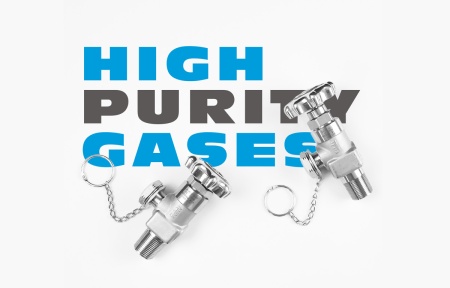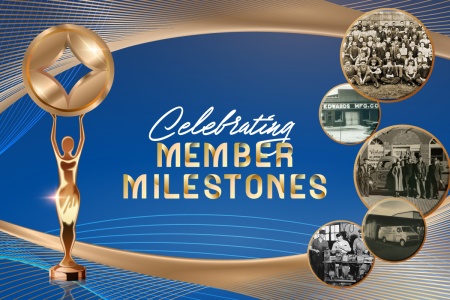The gases and welding industry is an integral part of our everyday lives. Of course, GAWDA members already understood that. But now it has been officially codified by the United States government and other governments around the world. When the COVID-19 pandemic started to become more wide-spread, the entire business landscape changed. Some businesses had to shut down completely. Others, deemed as “essential services,” were forced to figure out, on the fly, how to operate in a way that allowed them to continue to service their customers without putting their staff in danger.
Many GAWDA members have had to deal with disasters that have disrupted normal business in the past. However, unlike with fires, floods, hurricanes or earthquakes, this pandemic is invisible. It can’t be seen, in many cases it can’t be detected until days later, and we have no idea when or even if it will go away. And with an infection rate of multiple times the common flu combined with an aging workforce in our industry, members had to not only make difficult decisions, but quick decisions.
Establish a Continuity Plan
Once states started issuing shelter-in-place orders and non-essential businesses were forced to shut down, the most important action for businesses to take was to establish a business continuity plan. This was obviously vital during the COVID-19 pandemic but is something that businesses should have in place should we ever be faced with another economic disruptor of similar scale in the future.
GAWDA released a safety alert entitled Coronavirus Business Continuity Plan, which lays out a comprehensive plan for members to follow to ensure as smooth a continuation of business as possible. It also includes several “Dos” and “Don’ts” for employee safety, as recommended by the CDC. This document can be found on GAWDA.org/covid-19.
“Immediately after it was released, we adopted the GAWDA Business Continuity Plan for COVID-19,” says Abydee Butler Moore, 2020 GAWDA President and President and COO of Butler Gas. “We kept our operations open and enlisted various protocols for prevention measures to meet CDC recommended guidelines and maintain employee safety during the pandemic.”
Part of the Business Continuity Plan should be to reduce in-person staff and interaction. To do this, it is vital to identify business critical personnel (drivers, medical gas fillers, etc.) who will need to continue to be on-site. On the flip side, companies must also identify non-business critical personnel, who are not needed in-person, in the event of a government shutdown. Once identified, come up with a plan for those non-critical employees. This may be working from home, vacation, leave, or, if worse comes to worst, potential layoffs.
“We reviewed every single person in our manufacturing facilities to determine who was essential to the manufacture of products,” says Harris Products Group President David Nangle. “We asked those essential employees to continue to come to work while asking non-essential employees to work from home. Essential employees qualified for premium pay as it was critical to continue to make products. Those employees that could work from home were able to set up with their own direct line and computer and tap into our ERP systems and were active on day one servicing our customers. The processes we implemented were effective and were completely transparent to our customers.”
Keeping the Workplace Safe
For those employees that are deemed as essential, a plan to reduce interaction and enforce social distancing was vital.
“My COO Felim O’Malley and I started splitting the day so that we would not be in the building at the same time,” says AWISCO President Lloyd Robinson. “That way, if one of us were to get sick, the other one would not have had to quarantine.”
Because of the extremely contagious nature of the virus, it is vital to provide Personal Protective Equipment (PPE) to employees, as well as to encourage distancing. Local governments as well as the CDC have free to download signage that can be hung that dissuades mass gathering. Encourage one-way flow of traffic to reduce hallway congestion. Encourage video conferencing, even if employees are in the building at the same time. And, of course, encourage the use of masks outside of an employee’s individual workplace.
“In all of Harris’s operations, the safety and well-being of our employees is our paramount consideration. Even during normal times, Harris is an industry leader in maintaining the health and safety of its employees and the neighboring community,” says Nangle. “Harris is maintaining that priority today and has taken a variety of actions to combat the COVID-19 crisis head-on. Those actions include measures recommended by the U.S. Centers for Disease Control, emphasizing social distancing, providing employees with hand sanitizer and other hygiene products, implementing the wearing of masks, providing a clean workplace and implementing work from home practices.”
Abydee Butler Moore adds, “We implemented social distancing of on-site employees (still in effect) and remote teleworking whenever possible. We implemented a driver safety protocol for deliveries, staggered shift times, conducted frequent training, moved all meetings possible to virtual platform, and began a stringent cleaning regimen. Our analysis indicated that our drivers would have the greatest risk exposure as they are out in the field interfacing with the public. We provided additional supplies of disinfectant, gloves, masks, and hand sanitizer after providing job-specific training on new delivery procedures. We informed our medical facility customers that we would not be entering their buildings, and we collaborated with them on an outdoor cylinder exchange process. We also began to capture verbal confirmation signatures on paperwork instead of transferring pens and clipboards.”
Communication
In times of uncertainty, strong communication is paramount. Communicate with your employees, vendors and customers. Keep everybody completely up-to-date with any changing policies your company has implemented and how it may impact their jobs, payment or delivery schedule.
“Our safety director puts out an email every Tuesday and Friday, mostly concerning keeping safe and apprising everyone of what steps we are taking to keep everyone safe,” says Robinson. “I send out a weekly message on Sunday night that covers where we are and where I think we are headed as a company. We also have a twice monthly virtual town hall for all employees. I give a state of AWISCO and then it is opened up for questions.”
Industry partners like GAWDA and CGA have put together outstanding toolkits for businesses. Make sure to share that information with employees so they understand the industry guidance being provided. Answer any potential questions quickly and comprehensively so that they understand why certain decisions have been made.
“I participated in every single weekly GAWDA Consultants’ Roundtable for COVID-19 Risk Mitigation and would cascade the key takeaways company-wide,” says Butler Moore. “In addition to these weekly company messages, we met as a leadership team weekly to health check our actions within the Business Continuity Plan, and conducted company-wide trainings monthly. We kept our locations operating with curbside service to the public, and frequently provided tools and informational postings to our branches. We contacted our medical facility customers for cylinder decontamination confirmation, issued a medical safety alert, and provided copies of CGA P-83. Butler Gas leaned heavily on our resources through GAWDA and CGA; we are extremely grateful to be a part of these great organizations.”
Adds Nangle, “Throughout the pandemic we sent regular communications to all of our customers. Additionally, our sales personnel had regular contact with our customers via telephone and email. We have also placed information on our company website outlining our response to the pandemic. Over the years we have been very disciplined in our stage gate process in developing products for our customers. When the pandemic hit, we had to accelerate that process to turn weeks of development time into days. The development of custom oxygen panels was unique, and while great ideas don’t turn into new products, we found that the relationship we had with our vendors was very critical to our success. Vendors such as Swagelok, Ametek and WIKA – many of whom responded on a Sunday to ensure product by Monday night, were critical to our success. This illustrates how valuable our vendor relationships are. This was a very powerful event as it came together, and we delivered the first truck of panels for a remote hospital in New York.”
Contingency Planning
Of course, even the best-laid plans of mice and men often go awry. No matter the processes your company has implemented, it is absolutely vital to have a contingency plan in place in the event that an employee does contract the virus. Make sure that employees are temperature screened on the way in every morning. If an employee thinks that there is even a chance that they may be symptomatic or might have been exposed to somebody who was, encourage them to stay home and away from the office.
According to GAWDA’s Business Continuity Plan:
- Employees should self-quarantine for 14 days if: Traveled outside of the US within the past two weeks OR if they have been in close contact with an individual infected with COVID-19. Before returning to work, employees must provide a note from a Medical Professional stating they have no COVID-19 infection (CDC recommends verification by two tests, if possible).
- Employees who are sick should stay home and not come to work until they are free of fever (100.4 F), without the use of fever-reducing or other symptom-altering medicines (e.g. cough suppressants) for 24 hours.
- In the event of an employee contracting the virus, consider closing retail stores – or significantly limiting access using phone/electronic ordering and designated pick-up areas.
- Inform employees that a co-worker (do not state their name) has a presumptive/positive test.
- Consider contracting industrial cleaning company to periodically disinfect the facility.
Download the GAWDA Business Continuity Plan for COVID-19 at GAWDA.org/covid-19
Operating Successfully
Because our industry is an essential service, it is vital that companies are able to successfully navigate these landmines. This may be the last global pandemic any of us have to deal with, but it will not be the last business interruption. The steps taken now will inform how we react the next time something like this happens.
“From a personal standpoint it was moving to see the response from the entire Harris workforce who rallied around to respond to build panels for remote hospitals. We watched the news unfold at home. Our employees felt their efforts were going towards an incredible cause for our country. All of our employees showed up to work despite being worried or scared. We had workers from other Harris facilities drive hours to be a part of this effort. In the larger picture they represent the strength and the fabric of the American workforce. This reminded me of our countries response to 9/11 – we always rise to the challenge,” says Nangle. “While the pandemic has been difficult, I am reminded that times like these make us a better company.”
Adds Butler Moore, “I am so proud of the strength and dedication of our team. A little over half of our customers remained open through April and May, and it was an honor to continue to serve them and our communities. We are grateful to have stayed open, employed, and as lean as possible. I thank my grandparents for starting a business in such a diverse and essential industry. This industry is a family, and a lot of people helped us weather the storm. We are extremely appreciative of those partnerships.”
Robinson concludes, “I end every weekly message with the following: ‘stay safe, stay healthy and stay AWISCOSTRONG!!!’ That kind of sums it all up. Helping customers find the PPE that they need to continue working has been the most rewarding work.” He adds, “There will be no ‘normal’ to go back to. Everything has changed. How we adapt to the change will determine our long-term success.”









